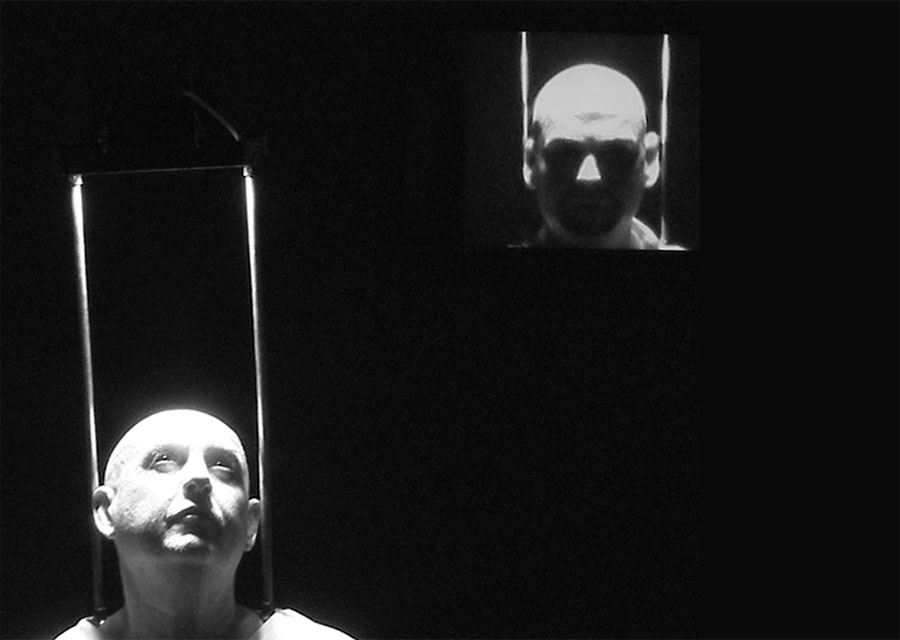
The filmmaker is a celluloid architect. The cinema creates places that tell us about its builder, its visual universe and the human mind. In Bernardí Roig’s films there are baroque halls, geometric structures, abandoned factories but there is also the desert. These are places evoked and activated by the artist from fragments of his cinematic memory. These infernal and labyrinthine places constructed with images borrowed from the cinematic imaginary mean looking out into the darkest of the mind, the madness of horror and human reason that are so many times the same.
Bernardí Roig. The cinematographic construction of the place presents for the first time in Asia a careful selection of the work of the Spanish artist Bernardí Roig in the field of moving images, delving into the use of cinematographic grammar to build an evocative place, a universe that refers to the work of great filmmakers like Alain Resnais or Luis Buñuel, among others.
The exhibition will take place from September 6th to October 4th, 2019 in Videotage, the very recognized center of moving images, new media and video art from Asia in Hong Kong, and it is curated by Susana Sanz.
The project is supported by the Ministry of Culture and Sports of the Government of Spain. And has the special collaboration of the Es Baluard Museum collection, the Institut d’Estudis Balearics, the Kewenig Gallery Berlin / Palma, Videotage, AFIAS, Spain Moving Images Festival and xd culture platform.
Bernardí Roig (Mallorca, Spain, 1965) is one of the most representative artists figures in Spanish contemporary art, both for his hybrid, mestizo and transversal work and for his international career.
In recent years his work has been shown in numerous museums and international institutions, among the most relevant:
Kunstmuseum, Bonn; Bozar, Brussels (Brussels); MACUF, A Coruña; Alte Pinakothek, Munich; Ca ’Pesaro, Galleria Internazionale d’Arte Moderna, Venice; Kunsthalle Krems; The Phillips Collection, Washington D. C .; National Museum of Monte Carlo; Triennale di Milano; Le Carre d’Art, Musée d’Art Contemporain de Nimes; IVAM, Valencia; Carlo Billotti-Villa Borghese Museum, Rome; Science Museum, London; National Sculpture Museum, Valladolid; It’s Baluard, Museum of Modern and Contemporary Art of Palma, Palma; Palazzo Fortuny, Venice; Kunstverein Ludwigsburg; The Salvador Dalí Museum, Florida; Center Arts Santa
Mònica, Barcelona; Tehran Museum of Contemporary Art, Tehran; MAMbo Galleria d’Arte Moderna, Bologna; La Recoleta Cultural Center, Buenos Aires; Coleção Berardo Museum, Lisbon; Palais des Nations of the UN, Geneva; CA2M Dos de Mayo Art Center, Madrid; Lázaro Galdiano Museum, Madrid; Busan Museum of Modern Art, South Korea; at the 54th Biennale di Venezia, Istituto Veneto di Scienze, Lettere ed Arti, Palazzo Franchetti, Venice; MUNTREF, Buenos Aires; Museum Residenzgalerie, Salzburg, Zentrum für Internationale Lichtkunst Unna, Dortmund; among others.
And in galleries such as Max Estrella, Madrid; Galerie Klüser, München; Galerie Kewenig, Berlin / Palma; Galleria Cardi, Milano; Galleria Marie-Laure Flesch, Rome / Brussels; Mario Mauroner Contemporary, Vienna. He has received the following awards: International Prize for Contemporary Art. Prince Pierre Foundation, Monaco (2003); Official XXI Alexandria Biennial Award, Egypt (2002); Special Pilar Juncosa and Sotheby’s Award, Fundació Pilar and Joan Miró to Mallorca, Palma (1997); Official Prize of the XXI International Biennal of Graphic Art, Ljubljana, Slovenia (1995).
quepintamosenelmundo: art, contemporary art, art online, spanish art
Videotage | Unit 13, Cattle Depot Artist Village, 63 Ma Tau Kok Road, To Kwa Wan, Hong Kong
http://videotage.org.hk
Image: Bernardi Roig
